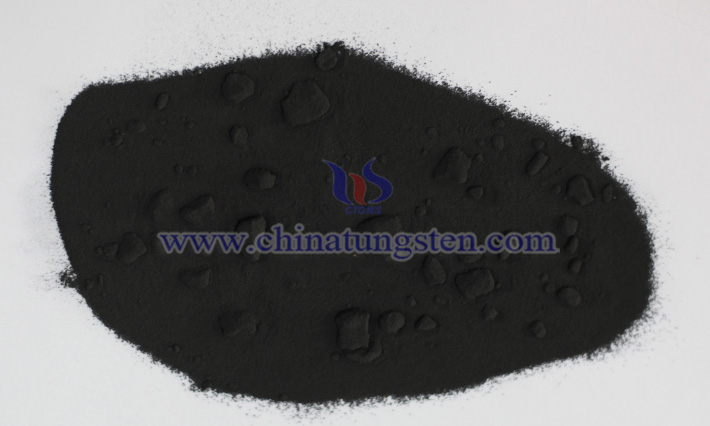From Ammonium Metatungstate to Tungsten Powder: Unlocking the Hidden Code of Industrial Manufacturing
- Details
- Category: Tungsten Information
- Published on Wednesday, 30 April 2025 19:23
In the vast landscape of modern industry, tungsten powder, though seemingly unremarkable, plays a critical role as an unsung hero. From everyday electronics to soaring aerospace vehicles and high-performance automobiles, tungsten powder is indispensable.
In the electronics sector, CTIA GROUP LTD’s tungsten powder, with its excellent electrical conductivity and high melting point, is ideal for manufacturing electrodes, thermocouples, and other components. As electronic devices trend toward miniaturization and higher performance, the demand for high-purity, fine-grained tungsten powder continues to rise.

The aerospace industry heavily relies on tungsten powder. In the extreme conditions of space or high-altitude flight, materials must exhibit high strength and heat resistance. Tungsten-based high-temperature alloys and thermal protection materials withstand the intense heat of atmospheric reentry or the high-pressure, high-temperature environments of jet engines. For instance, rocket engine nozzles often incorporate tungsten-containing alloys, maintaining stability under the erosive force of high-temperature gases.
In automotive manufacturing, tungsten powder is equally vital. High-density tungsten alloy crankshafts offer excellent performance and wear resistance, simplifying counterweight processes and reducing costs, making them widely used in engines. Additionally, tungsten-based cemented carbide tools, used in cutting and mold-making, ensure efficient, precise machining of automotive components, enhancing production quality and efficiency.
I. Ammonium Metatungstate: The “Mysterious Cornerstone” of Tungsten Powder Production
CTIA GROUP LTD’s Ammonium Metatungstate (AMT), with the chemical formula H28N6O41W12, is a crucial inorganic compound. Appearing as a white or slightly yellowish powder with a fine texture, AMT is highly water-soluble, distinguishing it from sparingly soluble ammonium paratungstate. This solubility makes it a standout in tungsten compound applications.
In tungsten powder production, AMT serves as a “chemical key,” acting as a critical precursor that paves the way for high-quality tungsten powder. The quality and properties of AMT significantly influence the performance and characteristics of the final tungsten powder product.

Thermal Stability: AMT exhibits excellent stability at room temperature, resisting decomposition and maintaining its chemical structure over time. During thermal processing:
At 200–300°C, AMT loses most of its crystal water and ammonium ions.
At 300–350°C, it undergoes a phase transition, forming metastable tungsten oxide.
At 500–550°C, residual ammonium and bound water remain partially undecomposed.
Above 600°C, AMT fully decomposes into tungsten trioxide (WO₃).
This stepwise decomposition allows precise control over reaction progression and product formation in tungsten powder production by adjusting temperature. Tungsten trioxide, the most stable tungsten oxide, can be reduced to tungsten powder using hydrogen at temperatures above 650°C or carbon at 1,000–1,100°C.
Water Solubility: AMT’s solubility in water facilitates its use in industrial processes. Dissolved AMT can be easily mixed with other reagents, enabling uniform and efficient chemical reactions. For example, in producing tungsten powder with specific particle size distributions, AMT aqueous solutions allow precise control of reaction conditions, meeting stringent particle size requirements across various industries.
II. Impact of AMT on Tungsten Powder Performance
As a key raw material in tungsten powder production, CTIA GROUP LTD’s AMT influences the final product’s performance through its purity, particle size, and crystal structure, acting like a precise code that shapes tungsten powder’s properties.
1. Purity
High-purity AMT minimizes the incorporation of impurities such as iron, silicon, or potassium. Impurities can form low-melting-point phases or disrupt tungsten atom arrangement during reduction, reducing tungsten powder purity and density. This compromises stability and mechanical performance in high-temperature applications. High-purity AMT ensures superior quality, critical for demanding applications like aerospace and electronics.

2. Particle Size
The initial particle size and distribution of AMT directly determine the granulometric characteristics of the resulting tungsten powder. Smaller AMT particles typically yield finer tungsten powder with a high specific surface area and enhanced reactivity. Such fine powders promote uniform element diffusion in high-performance alloy production, improving strength and toughness. Conversely, larger AMT particles produce coarser tungsten powder, suitable for applications requiring specific porosity or wear resistance.
3. Crystal Structure
The crystal morphology of AMT affects the reaction pathways and atomic diffusion during reduction. For instance, AMT with specific crystal orientations may guide tungsten atom growth in particular directions, influencing the crystal structure of the resulting tungsten powder. This, in turn, impacts its electrical and thermal properties, tailoring the material for specialized applications.
- Chinatungsten Online: ammonium-metatungstate.com
- CTIA GROUP LTD: en.ctia.group
- Tungsten News & Price: www.ctia.com.cn
- Molybdenum News & Price: news.molybdenum.com.cn
- Tel.: 86 592 5129696; Email: sales@chinatungsten.com



 sales@chinatungsten.com
sales@chinatungsten.com